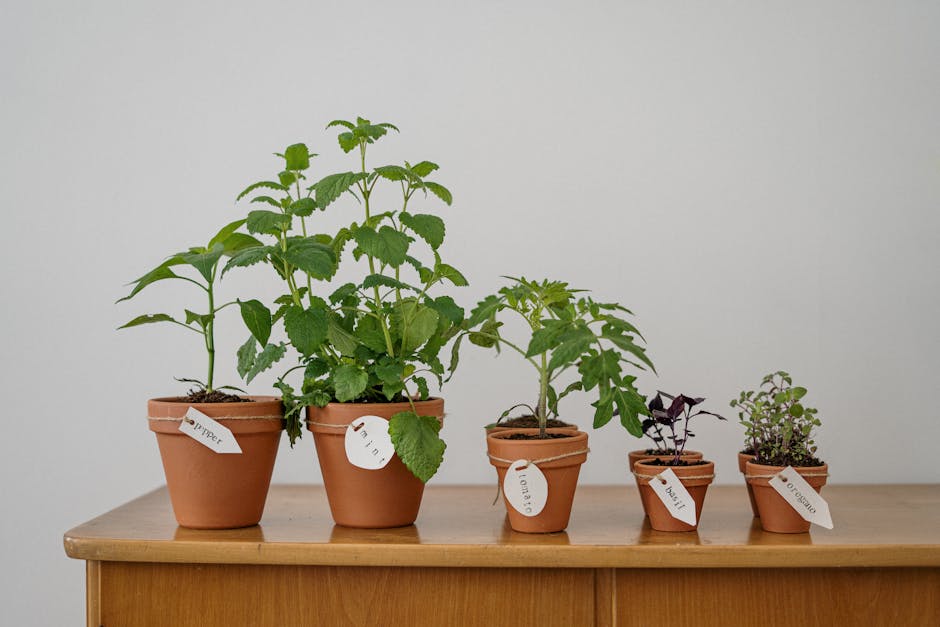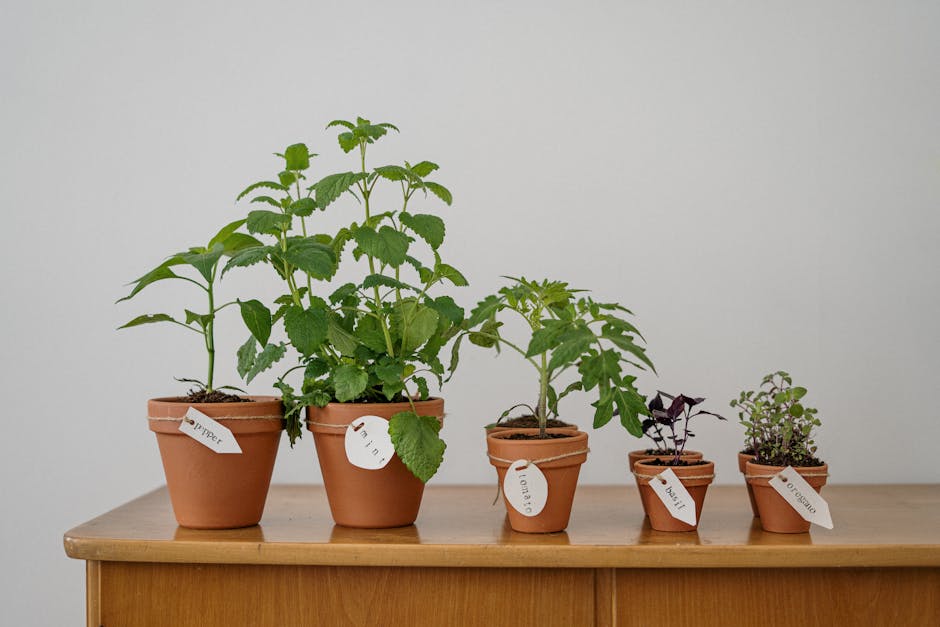Understanding the Importance of Soil and Fertilizer for Indoor Herb Growth

Indoor herb gardening is a delightful hobby that not only adds a touch of green to your living space but also provides fresh flavors for your culinary creations. However, to ensure your indoor herbs thrive, it’s crucial to understand the importance of soil and fertilizer.
Soil is more than just a medium for holding the plant upright. It’s a complex ecosystem that provides your herbs with the necessary nutrients, water, and air. The right soil mix can make a significant difference in the health and productivity of your indoor herb garden.
Most herbs prefer well-draining soil, which prevents water from pooling around the roots, a condition that can lead to root rot. A good choice for indoor herbs is a lightweight, porous potting mix, often composed of peat moss, vermiculite, and perlite. This type of soil ensures that water drains quickly while still retaining enough moisture to nourish the plant.
The pH level of the soil is another critical factor to consider. Herbs generally prefer a slightly acidic to neutral pH, around 6.0 to 7.0. If the pH is too high or too low, it can prevent the plant from absorbing nutrients, even if they are present in the soil. You can easily test the pH level of your soil with a kit from a garden center and adjust it with lime or sulfur, if necessary.
While a good soil mix will provide some nutrients, indoor herbs also benefit from regular feeding with a suitable fertilizer. Fertilizer is like a multivitamin for plants, supplying them with essential nutrients that might not be present in the soil.
When choosing a fertilizer for your indoor herbs, look for one that contains a balanced ratio of the three primary nutrients: nitrogen, phosphorus, and potassium, often referred to as N-P-K. Nitrogen promotes leafy growth, phosphorus supports root development and flowering, and potassium enhances overall plant health.
It’s also important to remember that more is not always better when it comes to fertilizer. Over-fertilizing can lead to a buildup of salts in the soil, which can damage the roots and stunt growth. A good rule of thumb is to fertilize every two to four weeks during the growing season, and less often during the winter months when growth naturally slows.
In conclusion, understanding the importance of soil and fertilizer for indoor herb growth is key to a thriving garden. By choosing a well-draining soil with the correct pH level and feeding your herbs with a balanced fertilizer, you can create an indoor herb garden that not only looks beautiful but also provides you with a bounty of fresh flavors for your kitchen. Remember, the secret to successful indoor gardening lies in the details. So, pay attention to your herbs’ needs, and they will reward you with vigorous growth and abundant harvests. Happy gardening!
Essential Guide to Choosing the Right Soil and Fertilizer for Your Indoor Herbs
Growing indoor herbs can be a rewarding experience, especially when you see your little green friends thriving and flourishing. However, to ensure their healthy growth, it’s crucial to understand the importance of soil and fertilizer. These two elements play a significant role in the overall health and productivity of your indoor herbs.
Soil is the foundation of your indoor herb garden. It provides the necessary nutrients, water, and air that your herbs need to grow. But not all soils are created equal. For indoor herbs, you’ll want to choose a high-quality potting mix. Unlike garden soil, potting mix is specially designed to drain well, which is essential for preventing root rot and other water-related diseases. It’s also lighter and fluffier, allowing the roots of your herbs to grow and spread easily.
When choosing a potting mix, look for one that contains a blend of peat moss, vermiculite, and perlite. Peat moss helps retain moisture and nutrients, while vermiculite and perlite improve drainage and aeration. Some potting mixes also contain compost or worm castings, which can provide additional nutrients.
However, even the best potting mix can’t provide all the nutrients your herbs need in the long run. That’s where fertilizer comes in. Fertilizer is like a multivitamin for your plants, providing them with the essential nutrients they need to grow and thrive.
When it comes to choosing a fertilizer for your indoor herbs, there are a few things to consider. First, you’ll want to choose a balanced fertilizer. This means it contains equal amounts of nitrogen, phosphorus, and potassium, the three primary nutrients that plants need. These are often represented by three numbers on the fertilizer package, such as 10-10-10 or 20-20-20.
Nitrogen promotes leafy growth, making it essential for herbs like basil and parsley. Phosphorus supports root development and flowering, while potassium enhances overall plant health.
Second, consider the form of the fertilizer. Fertilizers come in various forms, including granules, spikes, and liquids. Granular fertilizers are easy to apply and provide slow-release nutrients, making them a good choice for long-term plant care. Spikes are convenient and mess-free, but they can sometimes deliver nutrients unevenly. Liquid fertilizers are quickly absorbed and easy to control, making them ideal for giving your herbs a quick nutrient boost.
Lastly, consider the source of the fertilizer. Organic fertilizers, derived from plant and animal sources, are a great choice for indoor herbs. They not only provide essential nutrients but also improve soil structure and promote beneficial soil microbes.
In conclusion, choosing the right soil and fertilizer is crucial for the success of your indoor herb garden. A high-quality potting mix provides a good start, while a balanced, organic fertilizer ensures your herbs get the nutrients they need to thrive. With these essentials in place, you’ll be well on your way to enjoying fresh, homegrown herbs all year round.

